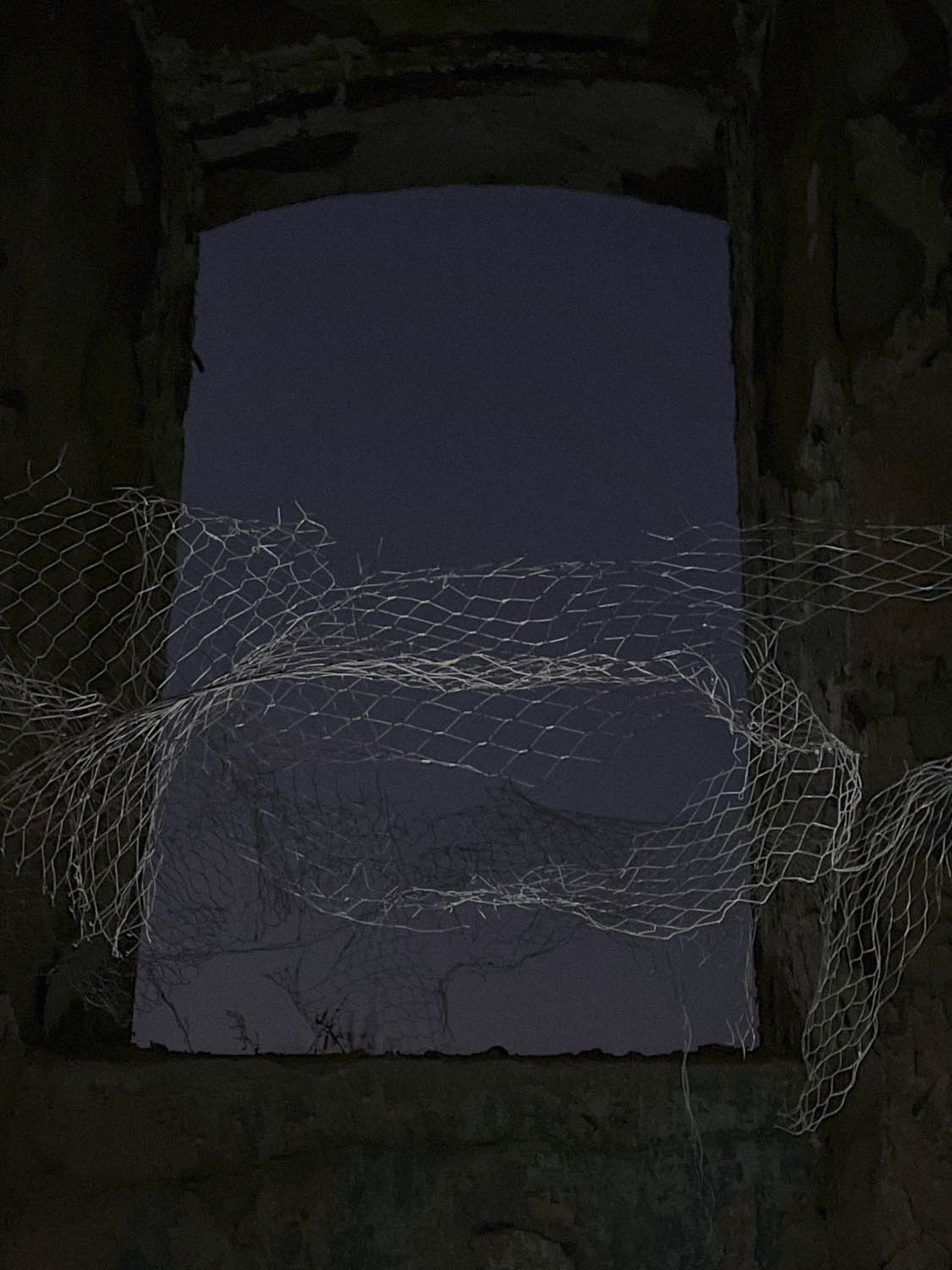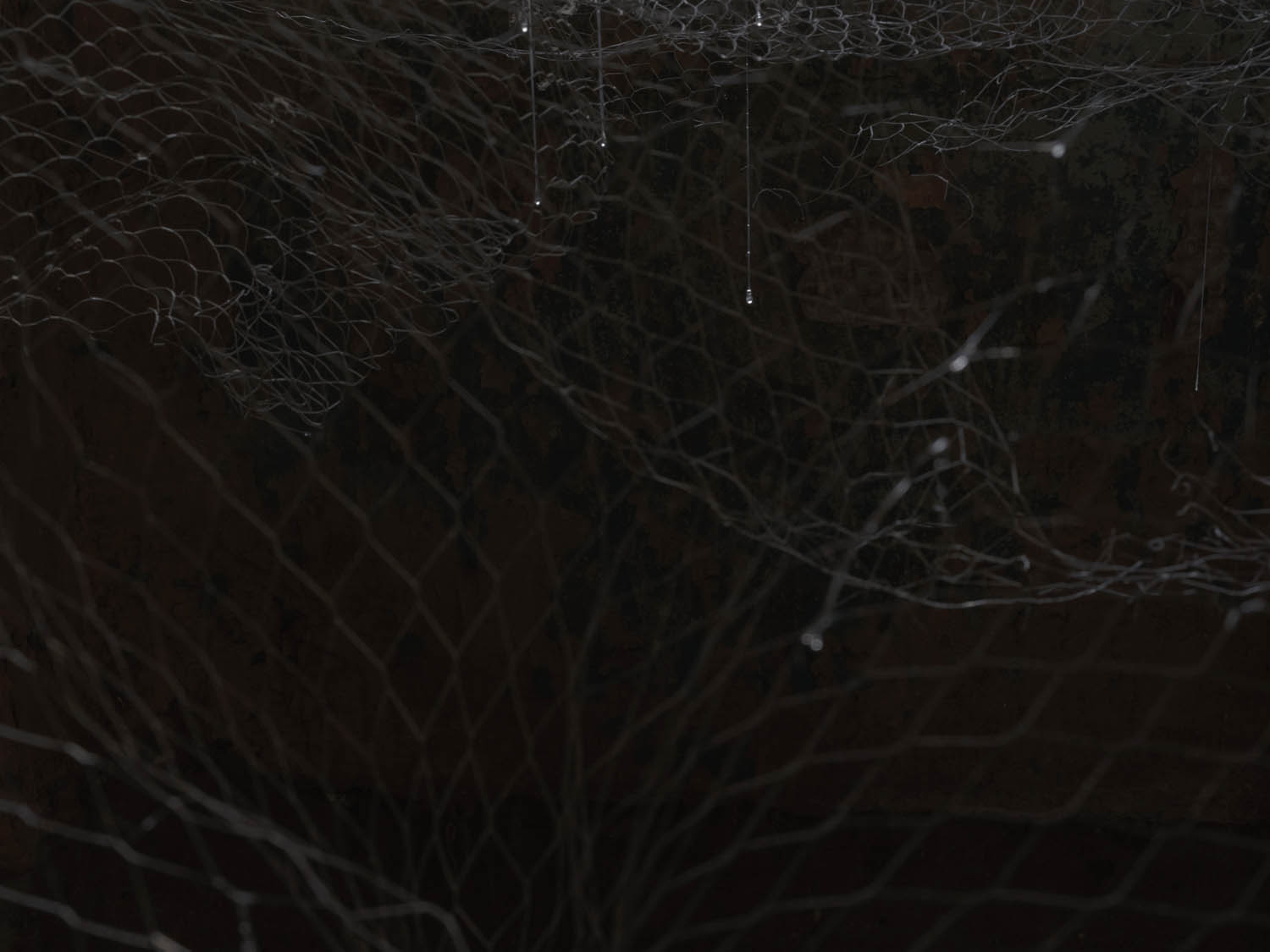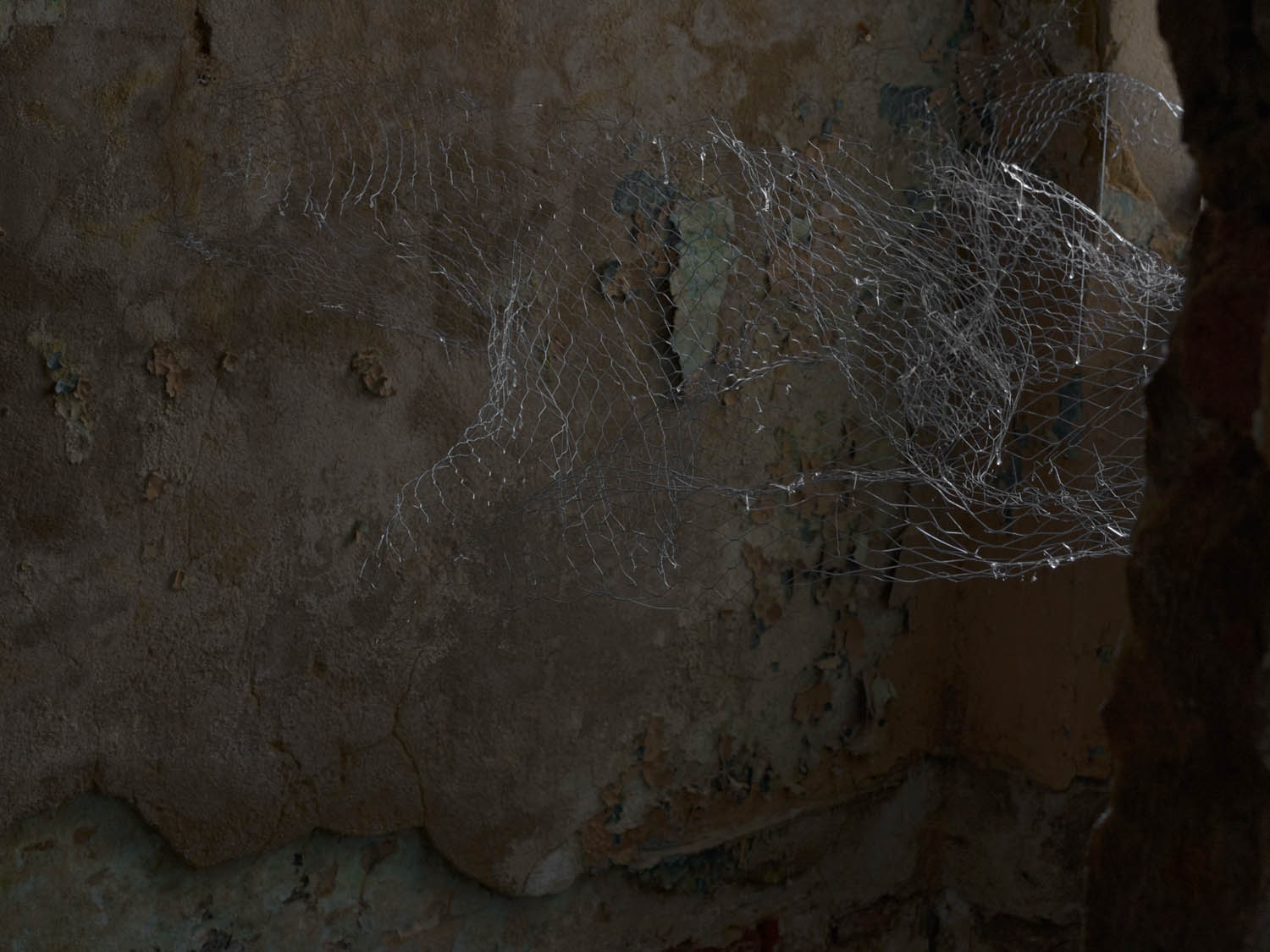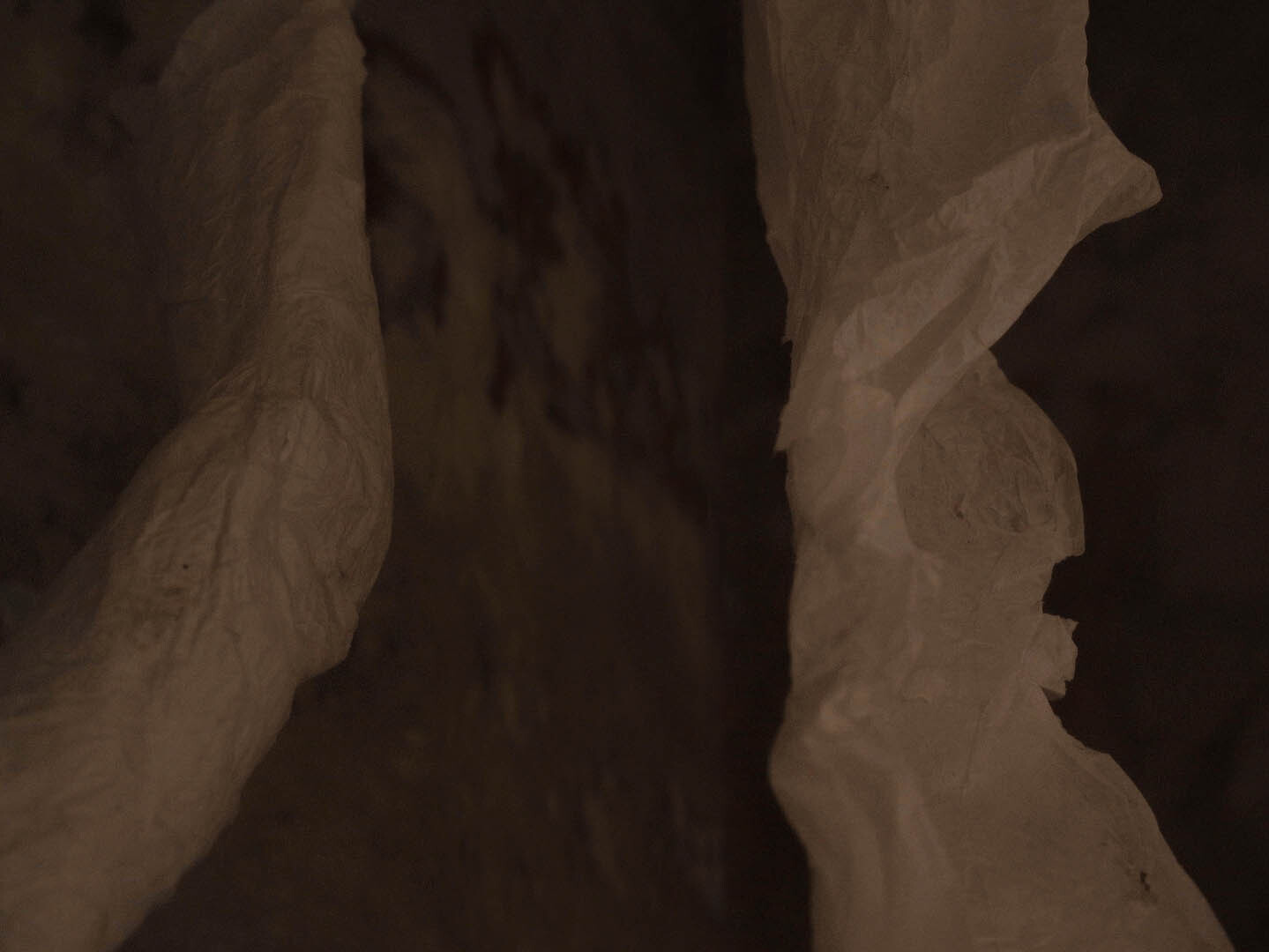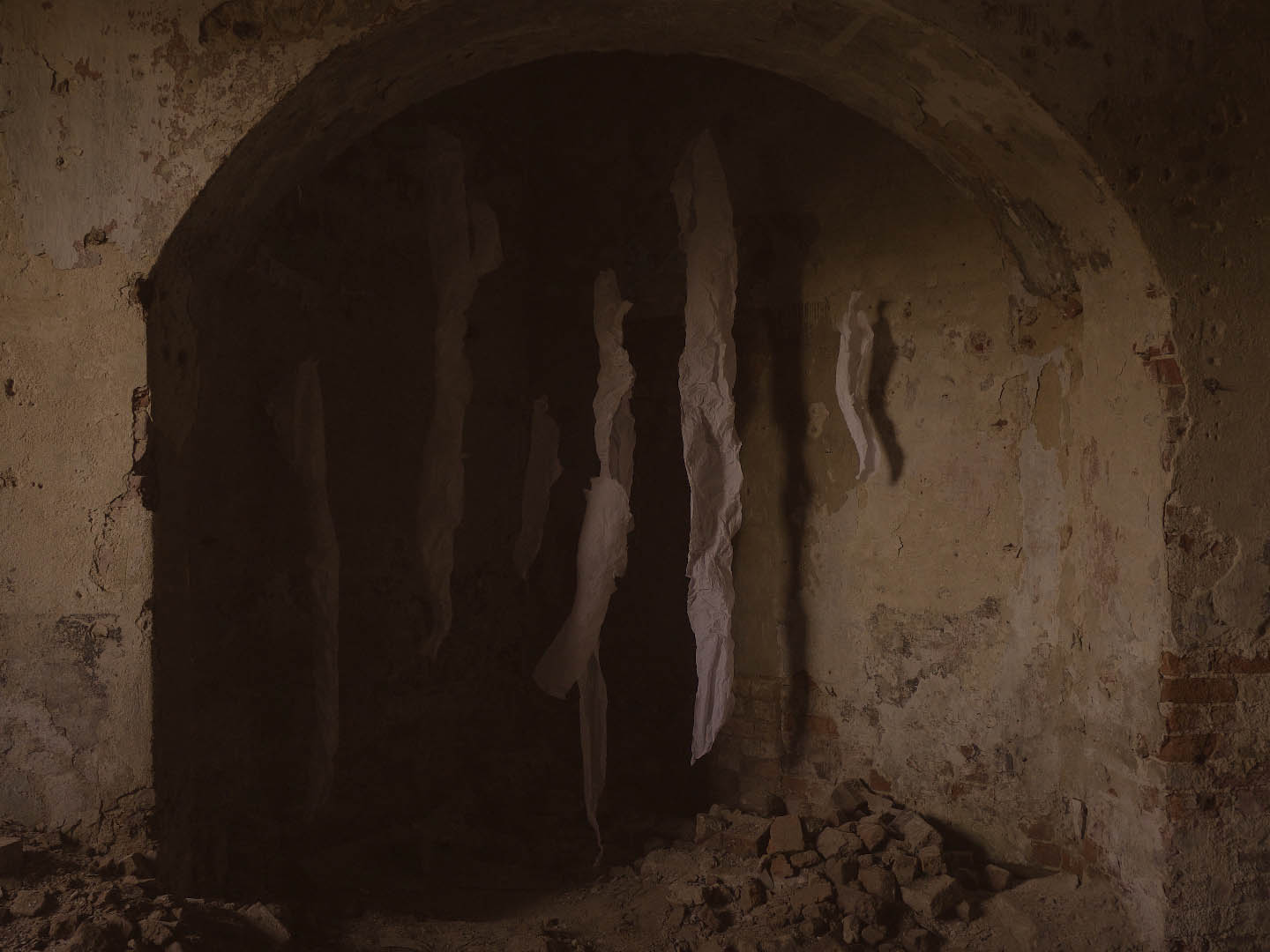Stones and Drops
Tracing paper, metal, fishing line, glue, 2021
This work was made at the UDAR residency in the Borovsk royal prison castle. During the residency, artists were invited to reflect on the space of a prison castle that was scheduled for reconstruction immediately after.
The prison castle complex was built in 1866 specifically to house inmates. However, after the 1917 revolution, the building took on a new function.
In the Soviet years, the chambers were used to house the staff of the Udarnik factory. There was a moment when the residents had already settled in the apartments, and the prisoners were just being taken out. The leading workers of the Krasny Oktyabr (Red October) plant were granted individual apartment-cells as a reward for their exemplary labor. This gave the building its new name: Dom Udarnika (The Stakhanovite’s House). From that point on, the building was barely maintained; its walls and structural elements slowly deteriorated, and its utilities fell into disrepair.
Since the beginning of the 2000s, no one lives there, the residents of the "Castle" were relocated.
The installation is situated in a cell on the ground floor, featuring an entrance to a cellar obstructed by a pile of stones. According to floorplans, there was once a torture chamber. I explored the specifics of this place, also weaving the topic with the context of the current repressions in Russia.
The prison castle complex was built in 1866 specifically to house inmates. However, after the 1917 revolution, the building took on a new function.
In the Soviet years, the chambers were used to house the staff of the Udarnik factory. There was a moment when the residents had already settled in the apartments, and the prisoners were just being taken out. The leading workers of the Krasny Oktyabr (Red October) plant were granted individual apartment-cells as a reward for their exemplary labor. This gave the building its new name: Dom Udarnika (The Stakhanovite’s House). From that point on, the building was barely maintained; its walls and structural elements slowly deteriorated, and its utilities fell into disrepair.
Since the beginning of the 2000s, no one lives there, the residents of the "Castle" were relocated.
The installation is situated in a cell on the ground floor, featuring an entrance to a cellar obstructed by a pile of stones. According to floorplans, there was once a torture chamber. I explored the specifics of this place, also weaving the topic with the context of the current repressions in Russia.
This work was made at the UDAR residency in the Borovsk royal prison castle. During the residency, artists were invited to reflect on the space of a prison castle that was scheduled for reconstruction immediately after.
The prison castle complex was built in 1866 specifically to house inmates. However, after the 1917 revolution, the building took on a new function.
In the Soviet years, the chambers were used to house the staff of the Udarnik factory. There was a moment when the residents had already settled in the apartments, and the prisoners were just being taken out. The leading workers of the Krasny Oktyabr (Red October) plant were granted individual apartment-cells as a reward for their exemplary labor. This gave the building its new name: Dom Udarnika (The Stakhanovite’s House). From that point on, the building was barely maintained; its walls and structural elements slowly deteriorated, and its utilities fell into disrepair.
Since the beginning of the 2000s, no one lives there, the residents of the "Castle" were relocated.
The installation is situated in a cell on the ground floor, featuring an entrance to a cellar obstructed by a pile of stones. According to floorplans, there was once a torture chamber. I explored the specifics of this place, also weaving the topic with the context of the current repressions in Russia.
The prison castle complex was built in 1866 specifically to house inmates. However, after the 1917 revolution, the building took on a new function.
In the Soviet years, the chambers were used to house the staff of the Udarnik factory. There was a moment when the residents had already settled in the apartments, and the prisoners were just being taken out. The leading workers of the Krasny Oktyabr (Red October) plant were granted individual apartment-cells as a reward for their exemplary labor. This gave the building its new name: Dom Udarnika (The Stakhanovite’s House). From that point on, the building was barely maintained; its walls and structural elements slowly deteriorated, and its utilities fell into disrepair.
Since the beginning of the 2000s, no one lives there, the residents of the "Castle" were relocated.
The installation is situated in a cell on the ground floor, featuring an entrance to a cellar obstructed by a pile of stones. According to floorplans, there was once a torture chamber. I explored the specifics of this place, also weaving the topic with the context of the current repressions in Russia.
